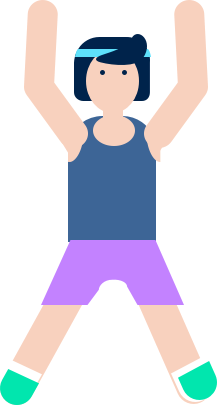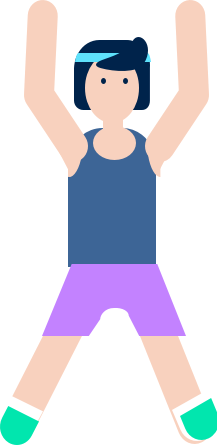Learn how to diagnose fever, identify fever symptoms in young children and what to do for a child with a fever.
Fever is a normal physiological response to illness, which facilitates and accelerates recovery. The condition is common in young children, and often benign and self-limiting. However, as childhood fever may be associated with increased morbidity in children, it frequently causes concern among parents and healthcare providers, and is consequently one of the most common reasons for which children are brought to seek medical attention.
In most cases, fever is a presenting symptom of a self-limiting viral infection. However, it may also be associated with serious bacterial infections, such as meningitis and pneumonia, and other non-infective illnesses such as Kawasaki’s disease and malignancy.
Thus it is important for healthcare professionals to determine the underlying serious illness causing the fever, and to identify children with life-threatening features and those at risk of serious illness so that timely intervention and proper referral can be made.
The most common causes of fever seen in young children who seek medical treatment at the Children's Emergency department at KK Women's and Children's Hospital include viral fevers, upper respiratory tract infections and gastroenteritis.
Related: Fever
What to Do for A Child With a Fever?
Guidelines for Clinical Assessment and Management of Fevers in Children
-
Identify fever symptoms and treat immediate life-threatening features
Be alert to features such as compromised airway, breathing or circulation, and decreased level of consciousness.
-
Conduct thorough history-taking and systematic examination
After stabilising the child with fever, a thorough history-taking and systematic examination should be carried out to determine the underlying cause of the fever and assess the child for risk of serious illness.
It is crucial to measure and record the child’s vital signs such as temperature, heart rate, respiratory rate and capillary refill time. Signs of dehydration such as prolonged capillary refill time, abnormal skin turgor, abnormal respiratory pattern, weak pulse and cool extremities should also be assessed.
-
Identify and treat features suggestive of specific diseases (Table 1)
TABLE 1. FEATURES IN CONJUNCTION WITH FEVER
THAT ARE SUGGESTIVE OF SPECIFIC DISEASES
DIAGNOSIS TO BE CONSIDERED
FEATURES IN CONJUNCTION WITH FEVER
Meningococcal
diseaseNon-blanching rash, particularly with one or more of
the following features:- an ill-looking child
- lesions larger than 2 mm in diameter (purpura)
- capillary refill time of ≥3 seconds
- neck stiffness
Kawasaki disease
Fever for more than five days, and at least four of the
following features:- bilateral conjunctival injection
- change in mucous membranes
- change in the extremities
- polymorphous rash
- cervical lymphadenopathy
Bacterial meningitis
- Neck stiffness
- Bulging fontanelle in infants
- Decreased level of consciousness
- Convulsive status epilepticus
Herpes simplex
encephalitis- Focal neurological signs
- Focal seizures
- Decreased level of consciousness
Septic arthritis
- Swelling of a limb or joint
- Avoiding use of, or bearing weight on, an extremity
Pneumonia
- Tachypnoea
> 60 breaths/minute, age 0–5 months;
> 50 breaths/minute, age 6–12 months;
> 40 breaths/minute, age more than 12 months - Crackling sounds in the chest
- Nasal flaring
- Chest indrawing
- Cyanosis
- Oxygen saturation ≤95%
Urinary tract infection
- Vomiting
- Poor feeding
- Lethargy
- Irritability
- Abdominal pain or tenderness
- Urinary frequency or dysuria
"Children with features indicating low risk of illness can be cared for at home; however, it is important to diagnose and treat the underlying cause of fever appropriately."
-
Assess the risk of serious illness in young children with fever (Table 2)
TABLE 2. TRAFFIC LIGHT SYSTEM FOR ASSESSING THE RISK OF
SERIOUS ILLNESS IN CHILDREN YOUNGER THAN FIVE YEARS
FEATURE
LOW RISK
INTERMEDIATE RISK
HIGH RISK
Colour (skin,
lips or tongue)- Normal colour
- Pallor reported by parent or carer
- Pale/mottled/ashen/blue
Activity
- Responds normally to social cues
- Content/smiles
- Stays awake or awakes quickly
- Strong normal cry/not crying
- Not responding normally to social cues
- No smile
- Wakes only with prolonged stimulation
- Decreased activity
- No response to social cues
- Appears ill to a healthcare professional
- Does not wake or if roused does not stay awake
- Weak, high-pitched or, continuous cry
Respiratory
- Nasal flaring
- Tachypnoea -respiratory rate:
>50 breaths/minute, age 6–12 months
>40 breaths/minute, age >12 month - Oxygen saturation ≤95% in air
- Crackles in the chest
- Grunting
- Respiratory rate
>60 breaths/minute - Moderate or severe chest indrawing
Circulation and
hydration- Normal skin and eyes
- Moist mucous membranes
- Dry mucous membranes
- Poor feeding in infants
- Reduced urine output
- Capillary refill time ≥3 seconds
- Tachycardia:
>160 beats/minute, age <12 months
>150 beats/minute, age 12–24 months
>140 beats/minute, age 2–5 years
- Reduced skin turgor
Other
- Age 3–6 months, temperature ≥39°C
- Fever for ≥Five days
- Rigors
- Swelling of a limb or joint
- Non-weight bearing limb/ not using an extremity
- Age <3 months, temperature ≥38°C
- Non-blanching rash
- Bulging fontanelle
- Neck stiffness
- Status epilepticus
- Focal neurological signs
- Focal seizures
Click here to read more and refer to Table 1 and 2.
- Normal colour
Visit Parent Hub, for more useful tips and guides to give your child a healthy start.
Download the HealthHub app on Google Play or Apple Store to access more health and wellness advice at your fingertips.

HealthHub AI

























